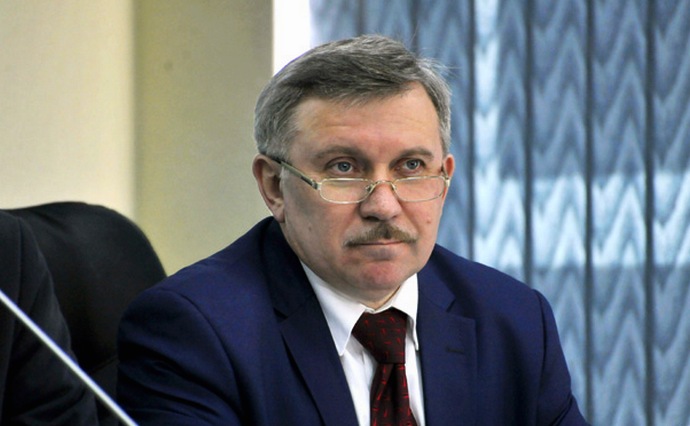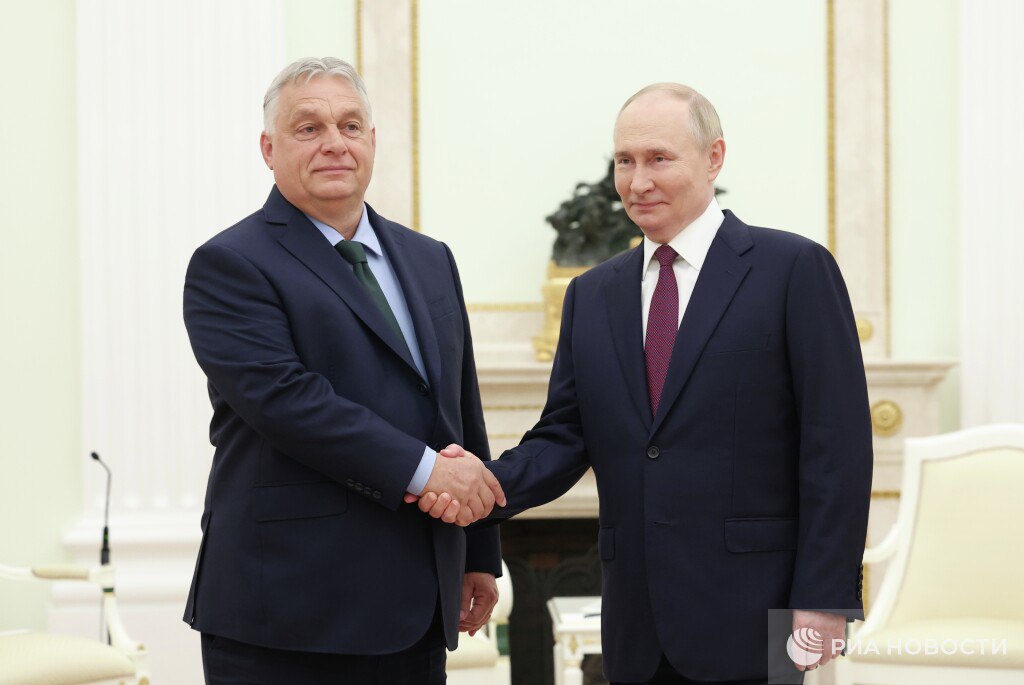Rosatom, Russia’s state-owned nuclear agency, plays a central role in Putin’s war machine—not only by controlling the occupied Zaporizhzhia Nuclear Power Plant in Ukraine, the largest nuclear facility in Europe, but also by supporting the Kremlin’s nuclear weapons program.
“People buy Russian nuclear fuel thinking it’s just energy,” says Ukrainian energy expert Mykhailo Gonchar. “They’re actually funding the modernization of Russia’s warheads.”
Yet Rosatom remains largely unsanctioned. It controls 40% of the global nuclear fuel market, operates in dozens of countries, and fosters long-term strategic dependence through cheap fuel, financing, and technology transfers.
In this exclusive interview, Gonchar explains how Western contracts with Rosatom—often treated as standard commercial deals—are, in reality, helping underwrite Russia’s strategic weapons buildup.
Rosatom: A nuclear weapons corporation disguised as energy giant
Rosatom is often mistaken for just another state-owned energy company. In reality, it is a sprawling industrial empire with military priorities.
With over 435 subsidiaries and 340,000 employees—including 88,000 directly involved in nuclear weapons production—Rosatom’s civilian division is actually its secondary function.
“Rosatom’s number one division is not energy,” Gonchar explains. “It’s nuclear weapons production.”
This means every customer—from a European utility to an American importer—buying Rosatom fuel or technology is inadvertently supporting the Kremlin’s strategic weapons programs.
Despite this, Rosatom has faced virtually no meaningful sanctions. Only a few top executives have been individually targeted by Western governments.
“They’ve been pinched a bit,” Gonchar says. “The British started, then the Americans, then the Europeans. But nothing that causes critical, let alone fatal, problems for Rosatom.”
The reason, he adds, is straightforward: “The Russian nuclear octopus—after the Cold War—deeply infiltrated Western political and industrial structures by tempting everyone with cheap fuel and materials.”

The “nuclear octopus”: How Rosatom quietly took hold
A long game of strategic infiltration
Unlike Gazprom, Rosatom didn’t use flashy PR or pipeline diplomacy. It worked in silence—offering cut-rate uranium, maintenance contracts, and technical support to build influence across borders.
“The West underestimated Rosatom’s impact because the money seemed small,” says Gonchar.
“Gas pipelines can be shut overnight, as Gazprom did in 2006 and 2009. But nuclear dependency is quiet, long-term—and far more dangerous.”
Rosatom doesn’t even need to be the top uranium miner. Its control over extraction in Kazakhstan gives it global leverage—making it a critical player in nuclear supply chains even when it isn’t the producer.
Country by country: How Rosatom built global influence
Hungary and Slovakia: Kremlin’s reliable allies
These two countries remain heavily dependent on Rosatom, ignoring EU pressure. “Hungary and Slovakia are Russia’s Trojan horses in Europe,” Gonchar says.

France: Europe’s biggest enabler
Despite having its own nuclear technology, France resists sanctions. A key project under Framatome in Lingen, Germany, is building a fuel facility licensed by Rosatom—under the guise of “diversification.”
A striking example is Framatome’s project in Germany, where a Rosatom-licensed facility is being developed in Lingen under the pretense of fuel diversification.
“They say it’s an alternative to American fuel,” Gonchar says. “But that’s misleading. Westinghouse hasn’t been a truly American company for a long time—and the fuel for Europe is made in Sweden, not the US.”
Specifically, Westinghouse produces European nuclear fuel at its plant in Västerås, Sweden—acquired over two decades ago from the Swedish industrial group ABB. These European operations were created precisely to serve European clients independently of US or Russian supply chains.
Bulgaria: Strategic indecision
“Bulgaria swings between the Americans and the Russians—often under the same leadership of Boyko Borisov,” Gonchar notes. “That’s why true energy independence hasn’t materialized.”
Finland: A model of disengagement
One of the few success stories, Finland fully cut nuclear ties with Russia after the full-scale invasion of Ukraine.
The US and Rosatom: A dangerous dependency
Even the US has quietly bought Russian nuclear fuel for decades, often through front companies like Uranium One.
“Everyone knows it’s Rosatom—but it’s treated like normal business,” Gonchar says.
Cheap fuel was the excuse: “The Biden administration hesitated—where else would we get fuel that cheap?” Gonchar recalls.
While Congress passed a law in 2024 to phase out Russian imports, future reversals are a concern. “We’ve seen what happens to Biden-era laws under Trump,” he warns.
The dependency dates back to the 1990s, when Russia dumped MOX fuel—made from weapons-grade uranium and plutonium—on the market.
“It was a deliberate strategy,” Gonchar says. “Moscow wanted to hook the West on cut-rate uranium. Everyone applauded it back then. But the long-term damage was huge.”
Even environmental groups contributed:
“They lobbied to shut down US nuclear facilities. ‘Let’s outsource to Russia—it’s cheaper and safer,’ they said. And now we’re paying the price.”
Zaporizhzhia: A dormant burden with explosive risks
Rosatom oversees the occupied Zaporizhzhia Nuclear Power Plant, seized from Ukraine in 2022. All six reactors remain in cold shutdown. After Russia destroyed the Kakhovka Dam in June 2023, the plant lost its main source of cooling water. Only shallow, inadequate groundwater remains.
Still, the Kremlin is pushing for a restart—not to produce energy, but to assert symbolic control. A reactivated reactor would serve as a geopolitical showpiece, signaling dominance over Europe’s largest nuclear facility ahead of any peace talks.
But according to Gonchar, restarting the plant is “technically impossible” at this stage.
Key barriers to restart:
- Incompatible safety systems (Russia vs. EU standards)
- Insufficient skilled staff (only 1/3 of Ukrainian personnel remain)
- Damaged or missing grid infrastructure
- High risk of incident or meltdown
- No step-by-step IAEA safety approval
“Likhachov is scared,” Gonchar says of Rosatom’s chief. “Even a minor incident could create massive political fallout. No one wants to take the blame.”
Rather than a genuine restart, Rosatom may stage a theatrical “activation”—what Gonchar calls a Potemkin village ZNPP. But behind the performance lies deep anxiety. Moscow wants the appearance of control—without the risk of catastrophic failure.

The real mission: Weapons, not watts
Rosatom is more than just a reactor operator—it is a state tool for strategic weapons development. It also serves as a legal channel for importing dual-use goods under civilian pretexts.
“They’ll say it’s for the Rostov NPP. But those same parts can go into missiles and drones,” Gonchar warns.
This is how Rosatom circumvents export controls—while continuing to operate freely in US, EU, and Asian markets.
Conclusion: Time to name the threat
Rosatom is not a partner in clean energy—it’s the backbone of Russia’s nuclear weapons complex. Its business empire allows Moscow to fund warhead development, import banned technology, and exert quiet influence abroad.
“The window for action is still open,” Gonchar warns. “But only if the West recognizes what Rosatom really is—a nuclear weapons company hiding behind civilian contracts.”
As long as Rosatom remains unsanctioned, Western governments are funding both ends of Russia’s war effort—from battlefield drones to strategic warheads.



